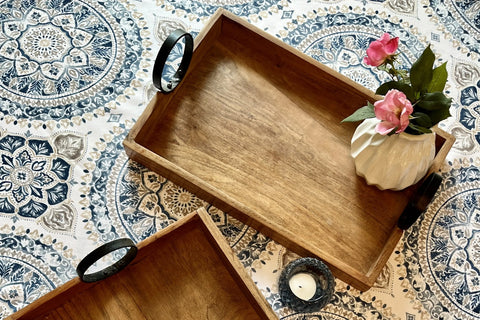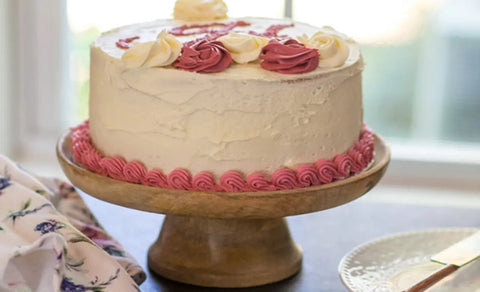You must have attended a formal lunch or supper or a social gathering with significant significance, such as a wedding, numerous times. Have you ever wondered what dining protocol should adhere to when you sit down to eat? The more formal it becomes, the more confusion it can cause. Understanding the fundamentals of table manners is a good idea because they are crucial in a variety of scenarios. Now when using various table spoons, such as coffee spoons, olive spoons, forks and knives, you no longer have to fear cutlery. Take a deep breath; We'll start simple.
1.) How To Use Cutlery Properly At The Beginning Of A Meal And How To Store It Thereafter?
Utensils are positioned in the order of use; from the outside in, this is the first and most fundamental rule to get you going. Basic utensils should be placed on each side of the plate if the food is simple. However, it is extremely likely that there will be additional cutlery nearby if the meal is significant and/or lengthy.
Knowing about the table spoon placements is something that one should be aware of in order to exhibit proper table etiquette. The fork is on the left, the knife is on the right, the blade faces the plate and the spoon is on the right of the knife. (If the oyster fork is going to be used, it is the only fork positioned to the right of the setting.) When we have multiple pieces of each sort of silverware and are unsure which to use first, a dilemma occurs. Forks and knives should always be used first from the starter to the second course. This guideline applies to both.
2.) Getting to Know Cutlery Language.
When it comes to socializing, the language of the cutlery is very interesting and helpful. Here are some pointers to make it perfect. For instance, if you're taking a break during lunch or supper, put your fork and knife in the middle of your plate and face the tips inward to make an inverted triangle (V). The proper way to set your knife and fork when you've finished one course and are ready for the next is to arrange them into the shape of a cross, with the fork pointing up and the knife to the left.
You can put the cutlery in the right-hand position to express your gratitude. By doing this, you will be telling the workers that the food was good. However, there are some who blatantly demonstrate that the food was subpar. In these cases, it is appropriate to place the cutlery in the same location as when you are taking a break, but this time, insert the knife's tip between the fork's teeth.
When setting the cutlery on the plate at the conclusion of a meal, we simply indicate that we are done and that the plate can be taken by placing the knife and fork straight up and down in the middle of the dish.

3.) How To Use And Place The Glasses?
Although five glasses are the maximum permitted by etiquette, you don't always have tables large enough to accommodate them all, so the minimum is to have at least one glass of water and one glass of wine. The water glass should be placed facing the tip of the knife, and the wine glasses should follow on the right, with the red wine glass being placed first and the white wine glass, which is typically narrower and should be placed a little closer to the diner, coming after.
4.) When & How To Use The Napkin?
Napkins, as you are aware, are required at every meal, and it is traditional table etiquette to place one at each place setting.
However, where should it be put? It may be placed in a variety of locations, such as on the plate or one of its sides, but never, for instance, within a glass.
The name or anagram that represents the restaurant's brand, if you have one, must be visible, whether it is to the left or to the right of the plate.
Here are some simple rules to follow if you're unsure about where to set your napkin: As soon as you are seated, pick it up, spread it out, and lay it across your lap. Now, the best scenario is for you to leave it slightly folded to the right of the plate if you need to stand up during your meal (never to the left, or on your chair).
To put it around your neck like a bib is something you should never do and is utterly improper.
When to use a napkin is another frequently asked issue. The answer is straightforward: just for mouthwash and hand sanitiser.
5.) The Coffee Spoon
These are tiny (sometimes smaller than even a teaspoon), not to be mistaken with a coffee measuring scoop, and are intended for stirring and drinking coffee from a smaller after-dinner coffee cup.
Demitasse spoons are diminutive spoons that are typically used with coffee cups. They are typically between 3 and 4 1/2 inches long. These spoons, which are also known as espresso spoons or mocha spoons, have a tiny, oval bowl.
Demitasse spoons, which are typically used to stir coffee or tea, are excellent for taking a tiny sample of the soup or sauce you have simmering on the stove! The little bowl is also perfect for drizzling caramel over vanilla ice cream or pouring your favourite garlic cream sauce over the asparagus.
For the coffee enthusiast, our demitasse spoons make a lovely gift. They come in a set of four and match our flatware patterns.
Note: After stirring, it's common to place the coffee spoon in your mouth. Etiquette forbids us from doing that, though! The coffee must be gently swirled from the bottom to the top, and it is best to immediately set the spoon—even if it is dirty—directly on the saucer.

6.) The Proper Way To Tilt The Plate So You Can Eat The Broth
The quickest action we could do to get the last spoons of soup would be to tilt the dish in our direction. Instead, according to etiquette, the plate should be angled toward the middle of the table in order to better control the gesture and avoid the possibility of spilling everything.
7.) The Best Posture At The Table
The right way to sit at a table is with your back straight and never with your elbows resting on the surface. In actuality, the arms should always be held along the hips, with the hands simply resting on the tablecloth.
8.) Refrain From Saying "Enjoy Your Meal"!
Because in ancient times the gathering at the table was an occasion for talk and discussion and the food was merely a side dish to make it more enjoyable, the code of etiquette forbids us from wishing the diners a healthy appetite.

9. Don't ask for salt
Never ask for salt because doing so could imply that you are not enjoying the food being served. In fact, it would be a good idea for those who set the table to provide diners with salt in a bowl with a teaspoon rather than in a salt shaker.
Table manners are one of those topics of information that, no matter how old we grow, can leave us feeling a little overwhelmed. However, proper table manners can go a long way.
Now that you know these basic guidelines, put them into practice since, as they say, "practice makes perfect!"



